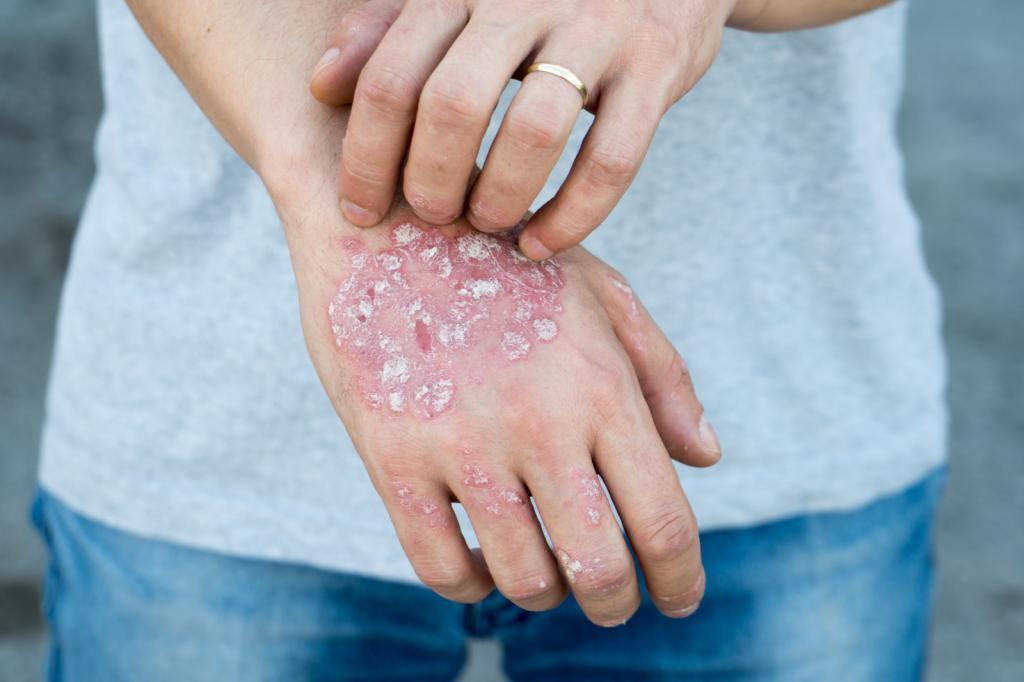

Psoriasis is a disease that is common in the community and persists for a long time with exacerbations. It is usually characterized by sharp redness, redness in the color of the psoriasis (silver) color which gives the disease its name.
Is psoriasis a common disease? What ages do you see?
Psoriasis is common all over the world; affects the frequency of genetic and environmental factors. The susceptibility to the disease can be passed on from the parents to the child, but the child may not have the disease. It occurs in one or two people per 100 people. It is equal in males and females. It usually starts at the age of 15-30.
What are the causes of the disease and the factors leading to the attacks?
Why is not known exactly; The immune system, genetic and environmental factors are thought to be effective. Environmental factors (streptococcal throat infections, drugs [cortisone, lithium, some blood pressure medicines, aspirin, etc.], excessive alcohol intake, smoking, scratching, cutting, sunburn, etc.) and mental stress disease can initiate or exacerbate.
Is the disease contagious?
The disease does not get into contact with anyone.
What are the symptoms of the disease?
Symptoms of the disease vary according to clinical characteristics.
• Psoriasis vulgaris (plaque type psoriasis) The most common psoriasis clinic (80%). Typical symptoms are oval or round, silvery, flaky redness covered with flakes. It is frequently placed in the knee, elbow, scalp and tail.
• Inverse psoriasis Occasionally the armpits, groin, under the breast, between the buttocks, knee back, elbow inner face and neck can be placed in places such as fold
• Palmoplantar psoriasis Can be seen in the palms and soles of the feet
• Guttat psoriasis The upper half of the trunk shows a small, rounded, pink-red, dandruff, similar to a rain drop. It is common in children and adolescents. It usually occurs following a throat infection and regresses within a few weeks or months.
• Erythrodermic psoriasis The disease covers more than 90% of the body. The disease can become widespread due to triggering factors such as drug, sunlight, trauma and infection. Treatment should be performed in the hospital.
• Pustular psoriasis There are red pimples on the red ground. Typical psoriasis occurs on plaques or in firm-looking skin. It is common in the whole body (common pustular psoriasis) or localized to palms and soles (palmoplantar pustular psoriasis).
• Psoriasis of the joints occurs in 2 out of 10 patients and 40 years of age. The most common finger and waist joints are kept. Morning stiffness or prolonged sitting can lead to symptoms such as seizure with standing, swelling in the hands or toes (gelişen sausage finger, appearance). In joint involvement, nail involvement is also common. It is usually accompanied by skin symptoms of the disease.
• Nails changes in psoriasis The nails are affected in approximately half of the patients. On the surface of the nail, the pinhead size pits, the separation of the nail from the bed, the yellowish coloration under the nail (oil stain appearance), the loss of a portion of the nail and the thickening of the skin under the free portion of the nail are common changes.
What is the course of psoriasis?
It is usually long lasting with exacerbations and periods of well-being. Symptoms and severity of the disease may vary from person to person, or even from the same person over time.
Does pregnancy affect the course of the disease?
Psoriasis can be pregnant. The effect of pregnancy is variable; The disease usually recovers in pregnancy, and returns to the old course after attacks. A small number of patients may develop pustular psoriasis during pregnancy. The drugs that can be used during pregnancy and lactation should be asked to the physician. Psoriasis and other diseases Increased blood fat, high blood pressure and diabetes are common, especially in patients with severe psoriasis, leading to susceptibility to cardiovascular diseases. Obesity and inflammatory bowel disease are also common.
How is psoriasis diagnosed?
The diagnosis can be made with clinical findings. Skin biopsy may be required rarely.
How is psoriasis treated?
There is no definitive treatment of the disease. However, it can be controlled with appropriate treatment and long-term well-being can be provided. Physicians, patients and their relatives should be in cooperation.
• Drugs and behaviors that can exacerbate the disease (scratching, fibrillation in the bath, pouch, etc.) should be avoided.
• Limited treatment with psoriasis primarily involves local treatments (drugs that remove dandruff on the skin surface, drugs with cortisone, antralin, calcipotriol [synthetic vitamin D], calcineurin inhibitors). These methods can be used together.
• Methotrexate, cyclosporin-A, acitretin (synthetic vitamin A) and phototherapy are used in resistant, widespread disease. If there is no response to this, biological agents (adalimumab, etanercept, infliximab, ustekinumab etc.) can be selected.
• Many factors are effective in the choice and duration of treatment (prevalence, location, nail and joint involvement, etc.).
• Dermatologists' knowledge and experience about the disease as well as the compliance of the patients with the recommended treatment are important in treatment success.